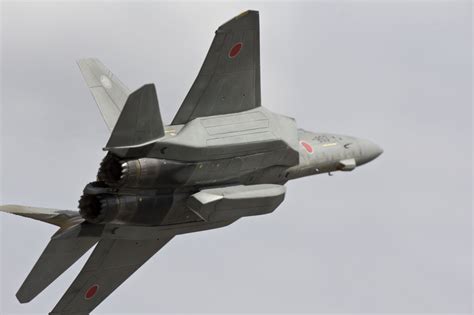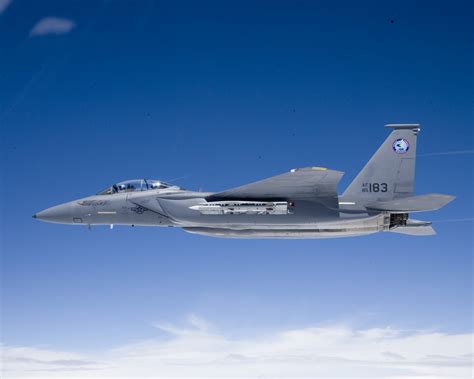The F-15 Stealth Fighter is a concept that has garnered significant attention in recent years, particularly in the context of advancements in stealth technology and the evolving nature of air superiority. The F-15, a legendary fighter jet known for its exceptional maneuverability, range, and firepower, has been a cornerstone of air forces around the world, including the United States Air Force (USAF), for decades. However, the term "Stealth Fighter" typically refers to aircraft designed from the outset to minimize their radar cross-section, such as the F-117 Nighthawk, the B-2 Spirit, or the F-22 Raptor and F-35 Lightning II fifth-generation fighters. The original F-15 Eagle, designed by McDonnell Douglas (now part of Boeing), does not inherently possess stealth capabilities. Instead, it relies on its speed, maneuverability, and advanced avionics for its effectiveness.
Evolution of Stealth Technology and the F-15

Stealth technology, which involves designing aircraft to absorb or deflect radar waves, reducing their visibility on radar systems, has become increasingly important in modern air warfare. The incorporation of stealth capabilities into fighter aircraft has been a significant development, aimed at enhancing their survivability in hostile, radar-rich environments. While the F-15 was not initially designed with stealth in mind, advancements in materials and design have led to the development of variants with enhanced survivability features, though not to the extent of dedicated stealth fighters. For instance, the F-15SE (Silent Eagle), a proposed variant of the F-15, incorporates conformal fuel tanks and internal weapons carriage to reduce its radar cross-section, although it does not achieve the stealth levels of fifth-generation fighters.
Technical Specifications and Stealth Features
The F-15SE, as a potential “stealth” variant of the F-15, includes features such as radar-absorbing materials (RAM) and redesigned external surfaces to minimize radar reflectivity. However, its stealth capabilities are limited compared to purpose-built stealth aircraft like the F-22 and F-35. The F-15’s large size, traditional design, and the presence of external sensors and antennae limit its ability to achieve low observability. The F-15EX, another recent variant, while not specifically designed for stealth, includes advanced avionics and networking capabilities, enhancing its overall effectiveness in network-centric warfare environments.
| Specification | F-15 Eagle | F-15SE Silent Eagle |
|---|---|---|
| Length | 63.8 ft (19.45 m) | 63.8 ft (19.45 m) |
| Wingspan | 42.8 ft (13.05 m) | 42.8 ft (13.05 m) |
| Empty Weight | 28,000 lb (12,701 kg) | Approx. 30,000 lb (13,608 kg) with stealth features |
| Max Speed | Mach 2.5+ (around 1,875 mph or 3,018 km/h) | Mach 2.5+ (around 1,875 mph or 3,018 km/h) |

Key Points
- The F-15, while an iconic and highly capable fighter, is not inherently a stealth fighter.
- Stealth technology involves reducing an aircraft's radar cross-section through design and materials.
- Variant models like the F-15SE incorporate some stealth features but do not achieve the same level of stealth as dedicated stealth fighters.
- Advancements in materials and avionics have enabled the development of more survivable variants of the F-15.
- The F-15EX, with its advanced avionics and networking capabilities, represents a significant evolution in the F-15 series, though not specifically focused on stealth.
Operational Context and Future Developments

The operational context for fighter aircraft is evolving rapidly, with an increasing emphasis on network-centric warfare, advanced sensors, and the ability to operate in contested airspace. While stealth is a critical component of this environment, it is not the only factor. The ability to integrate with other assets, utilize advanced munitions, and leverage sophisticated avionics and sensors also plays a crucial role. The F-15, in its various forms, has shown an ability to adapt to these changing requirements, with ongoing modernization efforts aimed at ensuring its relevance on the modern battlefield.
Challenges and Limitations
Despite the advancements and potential for future development, there are challenges and limitations to consider. The cost of modifying existing aircraft to incorporate stealth features, the inherent design limitations of non-stealth optimized airframes, and the balance between stealth and other performance characteristics are all critical factors. Moreover, the rapid evolution of air defense systems and the development of counter-stealth technologies pose ongoing challenges for stealth aircraft, necessitating continuous investment in research and development to maintain an edge.
What is the primary difference between a traditional F-15 and a stealth fighter like the F-22?
+The primary difference lies in their design philosophy, with stealth fighters like the F-22 being designed from the outset to minimize their radar cross-section, whereas the F-15, even in its modified forms, does not achieve the same level of stealth due to its original design not being optimized for low observability.
Can the F-15SE be considered a true stealth fighter?
+No, while the F-15SE incorporates some stealth features, it does not achieve the same level of stealth as dedicated stealth fighters like the F-22 or F-35. Its design modifications are aimed at reducing its radar cross-section but within the limitations of its original airframe.
What role does the F-15 play in modern air forces, given the advent of stealth technology and fifth-generation fighters?
+The F-15, in its various forms, continues to play a significant role in air forces due to its versatility, range, and firepower. While stealth fighters like the F-22 and F-35 are optimized for certain mission profiles, the F-15's capabilities make it valuable for a wide range of tasks, from air superiority to strike missions, especially when supported by advanced avionics and networked systems.
In conclusion, the concept of an F-15 Stealth Fighter represents a blend of traditional air superiority capabilities with modern stealth technology, aimed at enhancing the aircraft’s survivability and effectiveness in contemporary and future combat scenarios. While it may not achieve the stealth levels of dedicated fifth-generation fighters, the evolution of the F-15 series, including variants like the F-15SE and F-15EX, underscores the ongoing effort to adapt and modernize legacy aircraft to meet the changing demands of modern warfare.

